Today, we began to explore the Xakanaxa area of Moremi Game Reserve in the famous Okavango Delta, in the northwest area of Botswana. The Xakanaxa Lagoon is where the desert meets the delta, where waterways are surrounded by dense mopane forest and make for an excellent birding location.
Mopane (pronounced Mo-pa-ni), is the dominant tree in the wooded areas, in dense stands that provides a safe refuge for rare, timid, large antelopes, especially Greater Kudu. We encountered every type of mopane habitat – the towering cathedral woodlands called Xakanaxa (pronounced Ka-kana-ka), the classic climax mopane woodland and, in the drier and harsher habitats, extensive stretches of scrub mopane. Rainfall from the Angola highlands surges 745 miles (1,200 kilometers) into the Okavango Delta, creating a unique wetland that supports and sustains a huge diversity of wildlife.
Moremi lies on the eastern extremity of the Okavango Delta and has many types of habitats, including wide-open floodplains, marshes, ox-bow lakes, riverine forest, lagoons, papyrus-fringed channels, vast reed-beds of Miscanthus and Phragmites, woodlands, and savannah. The variety of habitats of the Okavango makes it a truly wonderful area, and all the major habitats and ecotones of the Okavango are preserved here. As a result of the extreme variation of habitats, the diversity of both mammals and birds is excellent. Moremi is among the best game reserves in Africa for viewing the endangered African Wild Dog, especially around Xakanaxa, which is also home to a large herds of African (Cape) Buffalo. The African Wild Dog’s range covers the territories of at least four prides of Lion, which we may see flanking the ever-moving herd of buffalo. Breeding herds of African Elephant move between their browsing areas in the mopane forests and the fresh water of the Okavango. Red Lechwe, one of the more unusual antelope species, is commonly found here.
On safari in Botswana, the best action and beautiful light is early in the morning and late in the afternoon until dusk. After morning game drives, we enjoyed camp-cooked lunch followed by a break. Then we went on an afternoon game drive to be in the field for the best light, as well as for the magic hour of dusk to dark when nocturnal animals become active.
One of the animals we saw was a herd of Kudu, a species of spiral-horned antelope. The kudu is one of the stateliest animals in Africa and in particular the male with its long spiral horns. Kudu can weigh as much as 420 to 600 pounds, and be as tall as 55″ at the shoulder. See the photograph below.
 We also saw a herd of Steenbok, a common antelope found in southern and western Africa. Steenbok are petite antelope. See the photograph below.
We also saw a herd of Steenbok, a common antelope found in southern and western Africa. Steenbok are petite antelope. See the photograph below.
 And, at dusk, we saw a hippopotamus grazing on land. The common hippopotamus, or hippo, is a large, mostly herbivorous, semiaquatic mammal. The hippopotamus is considered to be very aggressive and has frequently been reported as charging and attacking boats. See the photograph below.
And, at dusk, we saw a hippopotamus grazing on land. The common hippopotamus, or hippo, is a large, mostly herbivorous, semiaquatic mammal. The hippopotamus is considered to be very aggressive and has frequently been reported as charging and attacking boats. See the photograph below.
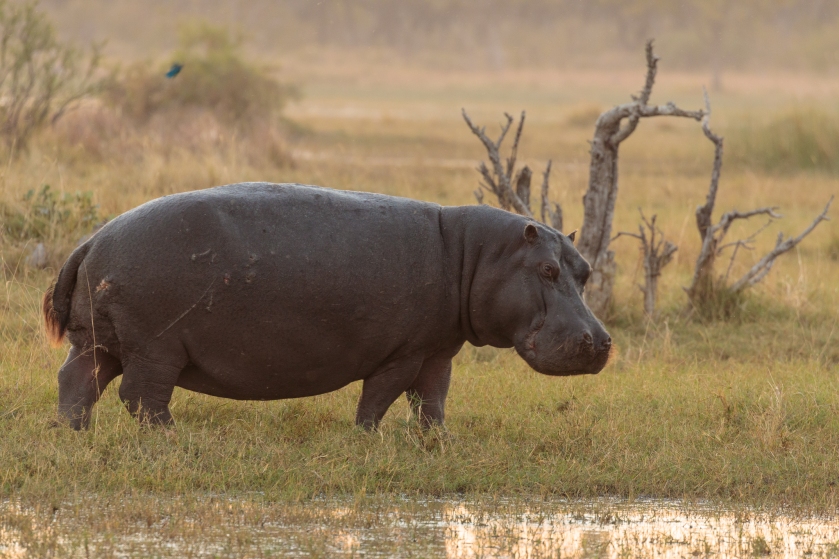 Elephants are commonly encountered in Botswana and Zambia. Botswana banned commercial game hunting in 2013. However, one of the long-term impacts of elephant poaching has been elephants being born tukless. In some areas 98% of female elephants now have no tusks, compared to between 2% to 6% born tuskless on average in the past. A photograph of an elephant we saw on this day is presented below.
Elephants are commonly encountered in Botswana and Zambia. Botswana banned commercial game hunting in 2013. However, one of the long-term impacts of elephant poaching has been elephants being born tukless. In some areas 98% of female elephants now have no tusks, compared to between 2% to 6% born tuskless on average in the past. A photograph of an elephant we saw on this day is presented below.
 We also saw zebras. In Botswana only the Burchell’s zebra occurs. The zebra is the national animal of Botswana. Zebra are generally migratory animals and in Botswana there are two annual migrations. The zebra of Botswana have a shadow brown stripe in the white stripe. This distinguishes them from the zebra of east Africa that do not have the shadow stripe. See the photograph below.
We also saw zebras. In Botswana only the Burchell’s zebra occurs. The zebra is the national animal of Botswana. Zebra are generally migratory animals and in Botswana there are two annual migrations. The zebra of Botswana have a shadow brown stripe in the white stripe. This distinguishes them from the zebra of east Africa that do not have the shadow stripe. See the photograph below.
 And then we saw wildebeests, also called gnus. Wildebeest often in graze in mixed herds with zebras, which gives heightened awareness of potential predators. We observed a wildebeest grazing with a herd of zebras. There was a time when 500,000 wildebeest moved across the sands of the Kalahari in Botswana to graze on the nutritious grasses in the valleys of the Central Kalahari. This migration was second in sheer numbers only to the Great Migration of the Serengeti Ecosystem in East Africa. However, the wildebeest population of Botswana has dropped by more than 90% in the past twenty years. This results from an agreement with the European Union to buy Botswana’s beef on condition that the country controlled the movement of wildlife into the domestic herds’ ranges in an attempt to stem foot and mouth disease. What the government did was to erect a series of fences across Botswana. These were generally done without thought for the wildlife, such as the wildebeest. The fences have prevented the migration between the wetlands of the north and the dry central Kalahari after good rains when the Kalahari was lush and watered. A photograph of a wildebeests are presented below.
And then we saw wildebeests, also called gnus. Wildebeest often in graze in mixed herds with zebras, which gives heightened awareness of potential predators. We observed a wildebeest grazing with a herd of zebras. There was a time when 500,000 wildebeest moved across the sands of the Kalahari in Botswana to graze on the nutritious grasses in the valleys of the Central Kalahari. This migration was second in sheer numbers only to the Great Migration of the Serengeti Ecosystem in East Africa. However, the wildebeest population of Botswana has dropped by more than 90% in the past twenty years. This results from an agreement with the European Union to buy Botswana’s beef on condition that the country controlled the movement of wildlife into the domestic herds’ ranges in an attempt to stem foot and mouth disease. What the government did was to erect a series of fences across Botswana. These were generally done without thought for the wildlife, such as the wildebeest. The fences have prevented the migration between the wetlands of the north and the dry central Kalahari after good rains when the Kalahari was lush and watered. A photograph of a wildebeests are presented below.
 And then we saw a herd of impalas. For predators, impalas are the McDonalds of the Serengeti – everybody eats there. In fact, on the previous day, we saw a partially eaten impala in a tree. The impala is the most widespread antelope in northern Botswana and, due to its abundance, this elegantly beautiful antelope is generally overlooked by visitors on safari – except when it is hanging in a tree or being eaten or chased.A photograph of the herd is presented below.
And then we saw a herd of impalas. For predators, impalas are the McDonalds of the Serengeti – everybody eats there. In fact, on the previous day, we saw a partially eaten impala in a tree. The impala is the most widespread antelope in northern Botswana and, due to its abundance, this elegantly beautiful antelope is generally overlooked by visitors on safari – except when it is hanging in a tree or being eaten or chased.A photograph of the herd is presented below.
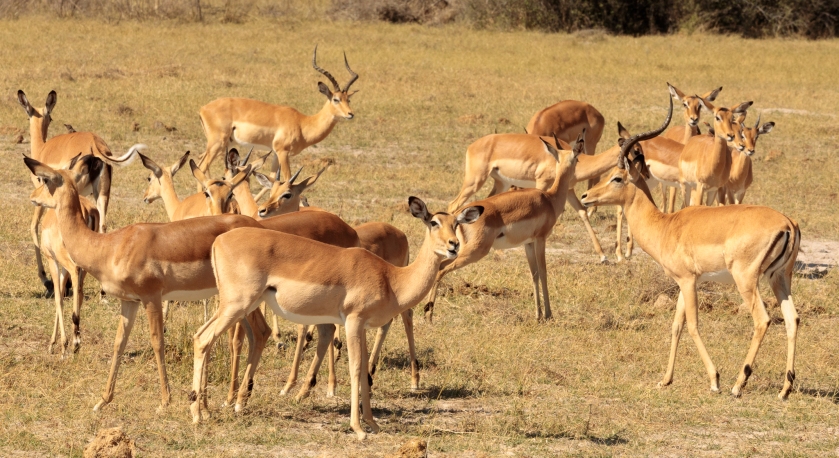 And finally, the roads in Botswana are, in some instance, not meant for the faint of heart. Few of the roads (25%) are paved. You will need a 4 x 4 to travel in the national parks. The roads can be little more than soft sand, and without a suitable vehicle, that’s where you’ll stay. The photograph below indicates some of the problems we encountered in the Moremi Game Reserve in Botswana.
And finally, the roads in Botswana are, in some instance, not meant for the faint of heart. Few of the roads (25%) are paved. You will need a 4 x 4 to travel in the national parks. The roads can be little more than soft sand, and without a suitable vehicle, that’s where you’ll stay. The photograph below indicates some of the problems we encountered in the Moremi Game Reserve in Botswana.

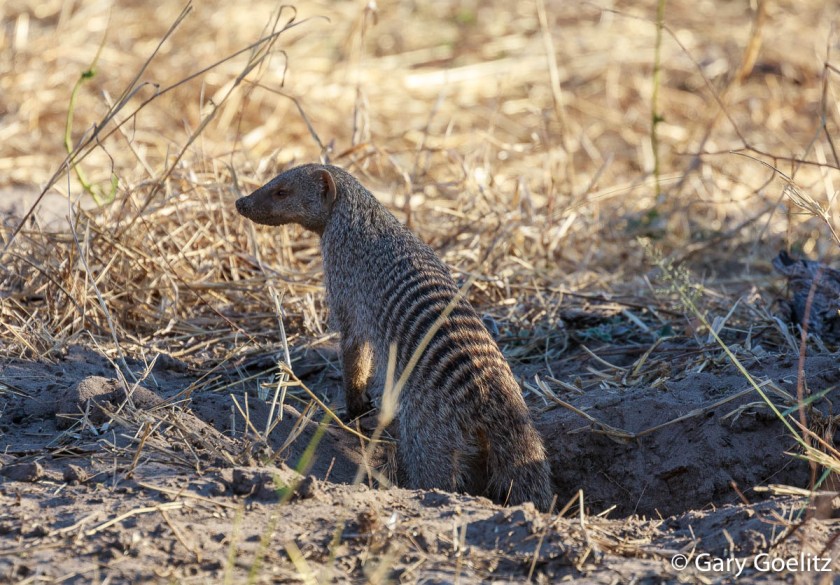
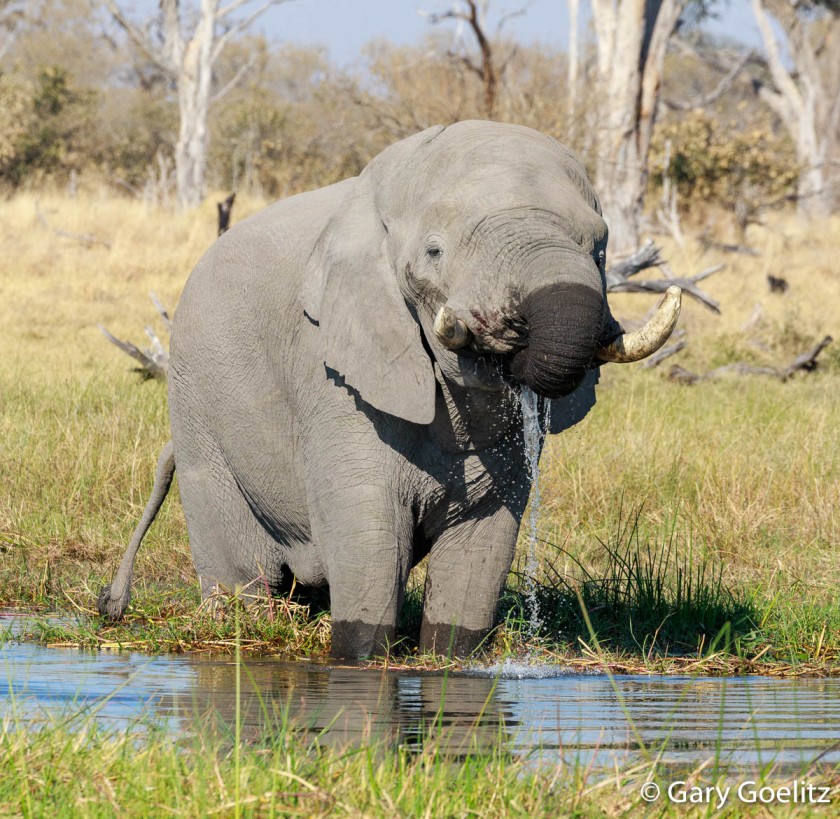
 We also observed an elephant with a damaged tusk (see the photograph below).
We also observed an elephant with a damaged tusk (see the photograph below). Some facts about tusks. First, all African elephants grow tusks, but only some male Asian elephants have tusks. Second, no two tusks are alike; researchers who track elephants use the appearance of the tusks, along with the ears, to identify individual elephants. Third, if a tusks breaks, it will not grow back. Tusks are teeth and just like our teeth, if one is broken, it stays broken. But unlike our teeth, a tusk can continue growing from the root if that isn’t damaged. It’s not unusual to see an elephant with only one tusk because the other was injured to the point that it stopped growing. Fourth, we can tell an elephant’s age by the length of its tusks. Fifth, after big tuskers are killed off by poaching, it artificially creates a larger pool of elephants with small tusks or none at all. In recent decades, several African parks have seen an uptick in the number of elephants being born without tusks.
Some facts about tusks. First, all African elephants grow tusks, but only some male Asian elephants have tusks. Second, no two tusks are alike; researchers who track elephants use the appearance of the tusks, along with the ears, to identify individual elephants. Third, if a tusks breaks, it will not grow back. Tusks are teeth and just like our teeth, if one is broken, it stays broken. But unlike our teeth, a tusk can continue growing from the root if that isn’t damaged. It’s not unusual to see an elephant with only one tusk because the other was injured to the point that it stopped growing. Fourth, we can tell an elephant’s age by the length of its tusks. Fifth, after big tuskers are killed off by poaching, it artificially creates a larger pool of elephants with small tusks or none at all. In recent decades, several African parks have seen an uptick in the number of elephants being born without tusks. Similarly, we observed elephants throwing dust on themselves (see the photograph below). Elephants like to play in the dirt, and for good reason! Though their hide looks tough, elephants have sensitive skin that can get sunburned.When they throw dust onto themselves, it is done not only to help cool down but also protect the skin from insects and parasites.
Similarly, we observed elephants throwing dust on themselves (see the photograph below). Elephants like to play in the dirt, and for good reason! Though their hide looks tough, elephants have sensitive skin that can get sunburned.When they throw dust onto themselves, it is done not only to help cool down but also protect the skin from insects and parasites. And later in the day, we observed a roan antelope with oxpeckers (the birds) eating insects (probably ticks) that it found on the roan antelope. Oxpeckers graze exclusively on the bodies of large mammals.
And later in the day, we observed a roan antelope with oxpeckers (the birds) eating insects (probably ticks) that it found on the roan antelope. Oxpeckers graze exclusively on the bodies of large mammals.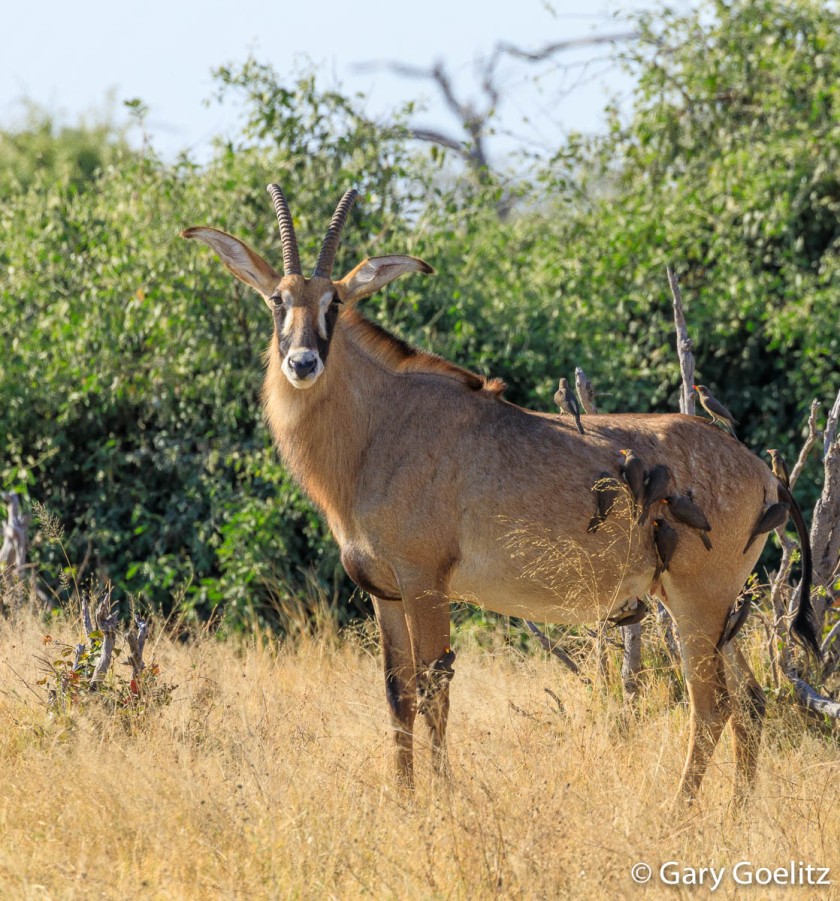
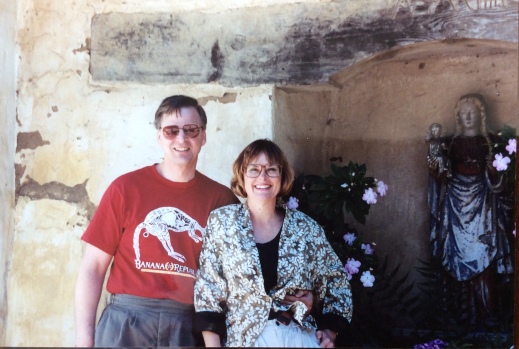

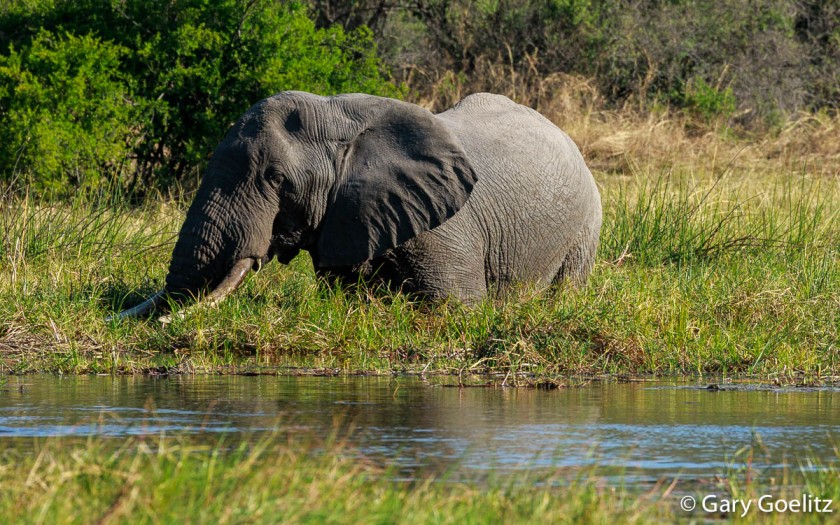

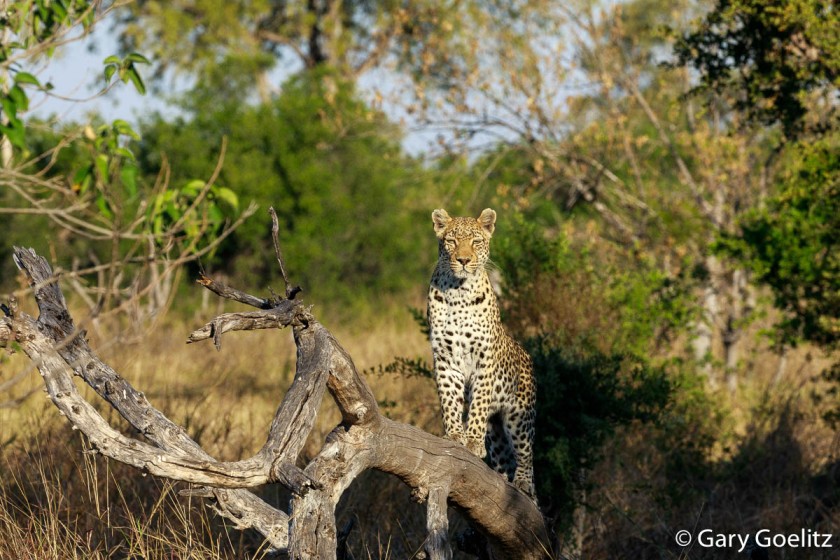
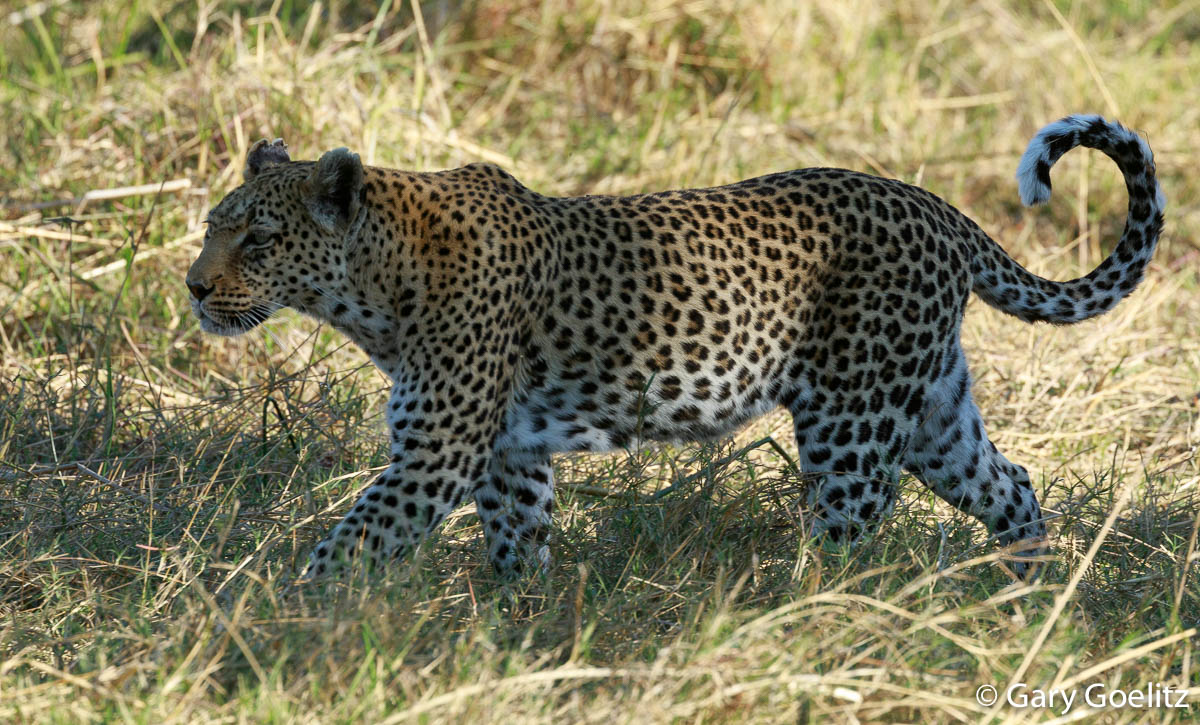
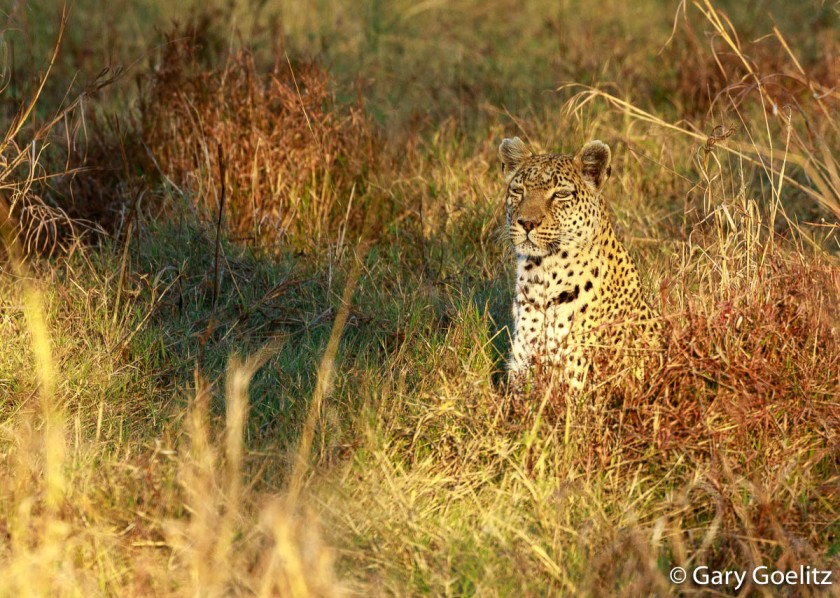




 After the birds, we then encountered a pride of lions, including cubs. A series of photographs of the pride is presented below.
After the birds, we then encountered a pride of lions, including cubs. A series of photographs of the pride is presented below.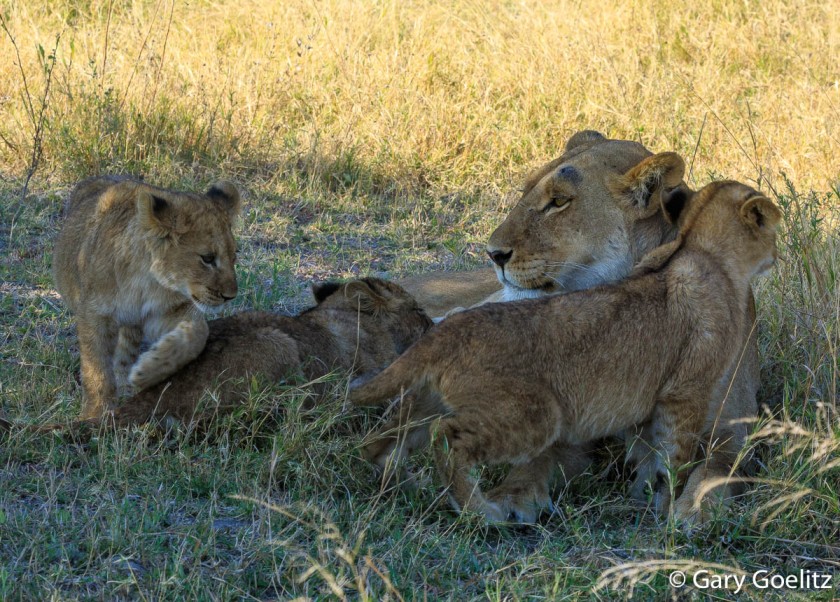

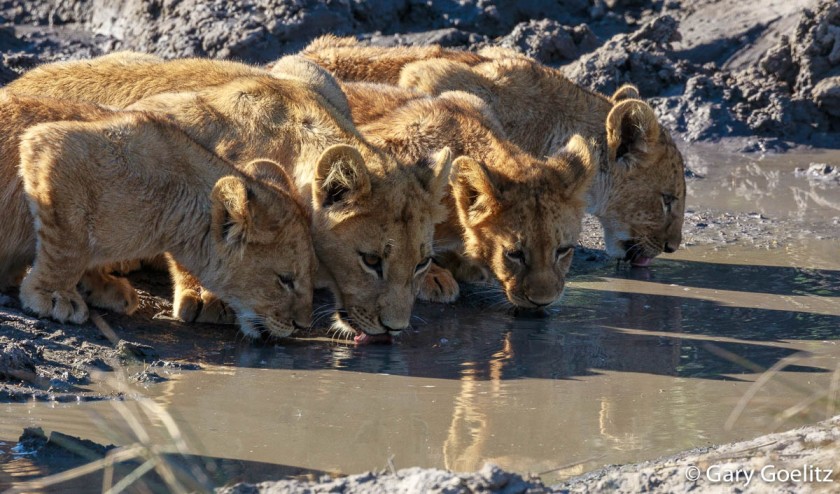
 And lastly, we encountered an Italian tourist who had rented a 4 x 4, with a snorkel for getting though streams, and did what you would expect a male to do: to drive where you should not drive. He promptly got stuck. We had to haul him out. Did not even bother to thank us; just drove on.
And lastly, we encountered an Italian tourist who had rented a 4 x 4, with a snorkel for getting though streams, and did what you would expect a male to do: to drive where you should not drive. He promptly got stuck. We had to haul him out. Did not even bother to thank us; just drove on.
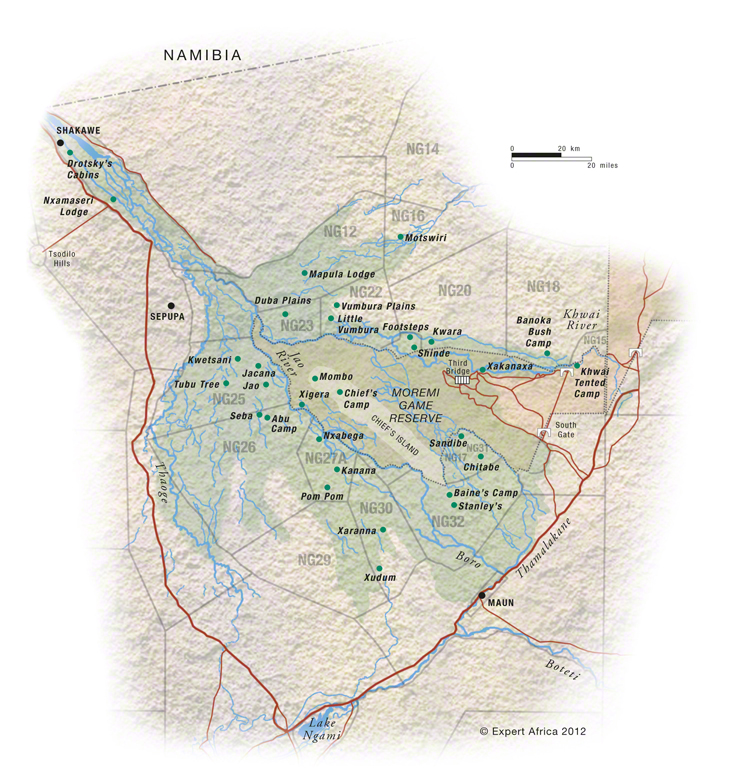


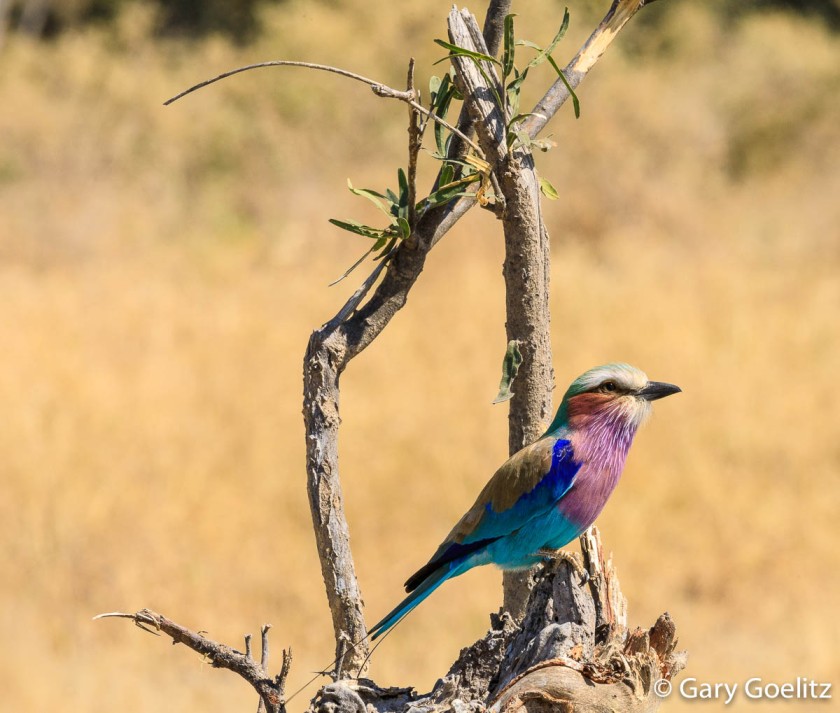


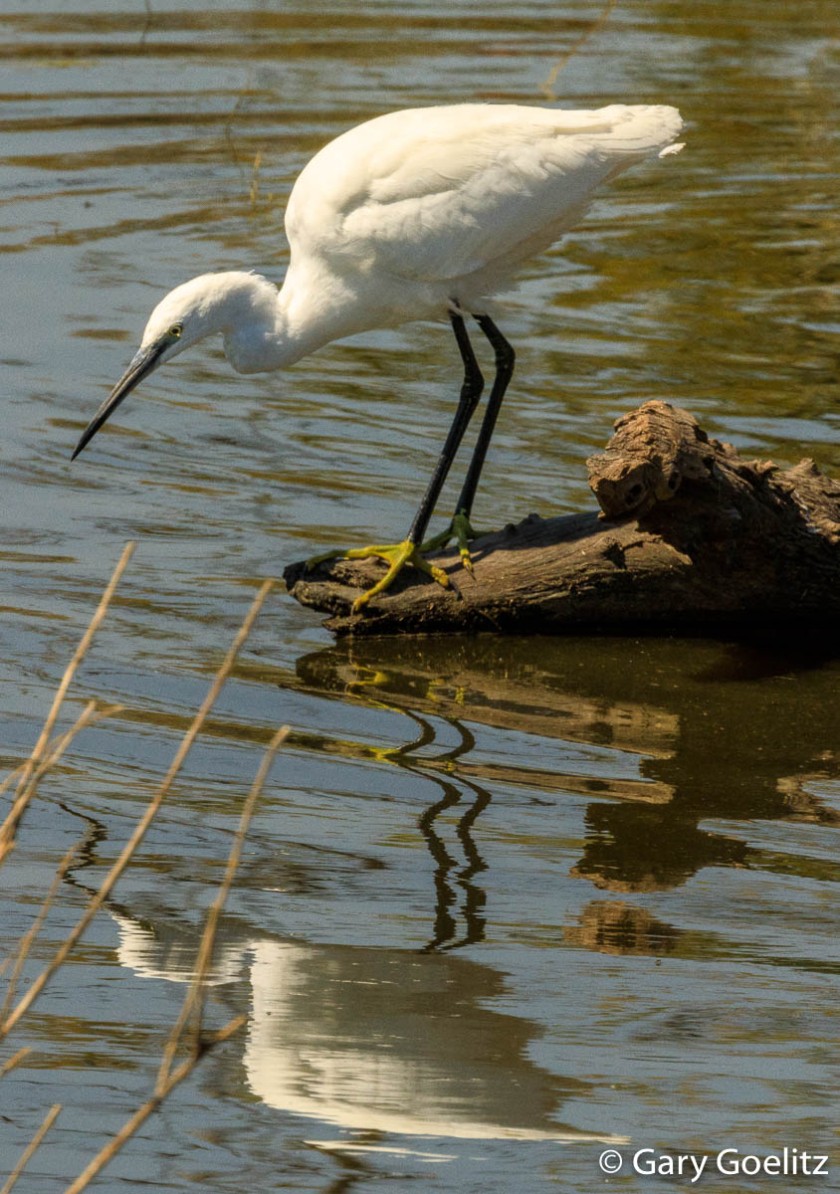
 We also saw a herd of Steenbok, a common antelope found in southern and western Africa. Steenbok are petite antelope. See the photograph below.
We also saw a herd of Steenbok, a common antelope found in southern and western Africa. Steenbok are petite antelope. See the photograph below. And, at dusk, we saw a hippopotamus grazing on land. The common hippopotamus, or hippo, is a large, mostly herbivorous, semiaquatic mammal. The hippopotamus is considered to be very aggressive and has frequently been reported as charging and attacking boats. See the photograph below.
And, at dusk, we saw a hippopotamus grazing on land. The common hippopotamus, or hippo, is a large, mostly herbivorous, semiaquatic mammal. The hippopotamus is considered to be very aggressive and has frequently been reported as charging and attacking boats. See the photograph below. Elephants are commonly encountered in Botswana and Zambia. Botswana banned commercial game hunting in 2013. However, one of the long-term impacts of elephant poaching has been elephants being born tukless. In some areas 98% of female elephants now have no tusks, compared to between 2% to 6% born tuskless on average in the past. A photograph of an elephant we saw on this day is presented below.
Elephants are commonly encountered in Botswana and Zambia. Botswana banned commercial game hunting in 2013. However, one of the long-term impacts of elephant poaching has been elephants being born tukless. In some areas 98% of female elephants now have no tusks, compared to between 2% to 6% born tuskless on average in the past. A photograph of an elephant we saw on this day is presented below. We also saw zebras. In Botswana only the Burchell’s zebra occurs. The zebra is the national animal of Botswana. Zebra are generally migratory animals and in Botswana there are two annual migrations. The zebra of Botswana have a shadow brown stripe in the white stripe. This distinguishes them from the zebra of east Africa that do not have the shadow stripe. See the photograph below.
We also saw zebras. In Botswana only the Burchell’s zebra occurs. The zebra is the national animal of Botswana. Zebra are generally migratory animals and in Botswana there are two annual migrations. The zebra of Botswana have a shadow brown stripe in the white stripe. This distinguishes them from the zebra of east Africa that do not have the shadow stripe. See the photograph below. And then we saw wildebeests, also called gnus. Wildebeest often in graze in mixed herds with zebras, which gives heightened awareness of potential predators. We observed a wildebeest grazing with a herd of zebras. There was a time when 500,000 wildebeest moved across the sands of the Kalahari in Botswana to graze on the nutritious grasses in the valleys of the Central Kalahari. This migration was second in sheer numbers only to the Great Migration of the Serengeti Ecosystem in East Africa. However, the wildebeest population of Botswana has dropped by more than 90% in the past twenty years. This results from an agreement with the European Union to buy Botswana’s beef on condition that the country controlled the movement of wildlife into the domestic herds’ ranges in an attempt to stem foot and mouth disease. What the government did was to erect a series of fences across Botswana. These were generally done without thought for the wildlife, such as the wildebeest. The fences have prevented the migration between the wetlands of the north and the dry central Kalahari after good rains when the Kalahari was lush and watered. A photograph of a wildebeests are presented below.
And then we saw wildebeests, also called gnus. Wildebeest often in graze in mixed herds with zebras, which gives heightened awareness of potential predators. We observed a wildebeest grazing with a herd of zebras. There was a time when 500,000 wildebeest moved across the sands of the Kalahari in Botswana to graze on the nutritious grasses in the valleys of the Central Kalahari. This migration was second in sheer numbers only to the Great Migration of the Serengeti Ecosystem in East Africa. However, the wildebeest population of Botswana has dropped by more than 90% in the past twenty years. This results from an agreement with the European Union to buy Botswana’s beef on condition that the country controlled the movement of wildlife into the domestic herds’ ranges in an attempt to stem foot and mouth disease. What the government did was to erect a series of fences across Botswana. These were generally done without thought for the wildlife, such as the wildebeest. The fences have prevented the migration between the wetlands of the north and the dry central Kalahari after good rains when the Kalahari was lush and watered. A photograph of a wildebeests are presented below. And then we saw a herd of impalas. For predators, impalas are the McDonalds of the Serengeti – everybody eats there. In fact, on the previous day, we saw a partially eaten impala in a tree. The impala is the most widespread antelope in northern Botswana and, due to its abundance, this elegantly beautiful antelope is generally overlooked by visitors on safari – except when it is hanging in a tree or being eaten or chased.A photograph of the herd is presented below.
And then we saw a herd of impalas. For predators, impalas are the McDonalds of the Serengeti – everybody eats there. In fact, on the previous day, we saw a partially eaten impala in a tree. The impala is the most widespread antelope in northern Botswana and, due to its abundance, this elegantly beautiful antelope is generally overlooked by visitors on safari – except when it is hanging in a tree or being eaten or chased.A photograph of the herd is presented below. And finally, the roads in Botswana are, in some instance, not meant for the faint of heart. Few of the roads (25%) are paved. You will need a 4 x 4 to travel in the national parks. The roads can be little more than soft sand, and without a suitable vehicle, that’s where you’ll stay. The photograph below indicates some of the problems we encountered in the Moremi Game Reserve in Botswana.
And finally, the roads in Botswana are, in some instance, not meant for the faint of heart. Few of the roads (25%) are paved. You will need a 4 x 4 to travel in the national parks. The roads can be little more than soft sand, and without a suitable vehicle, that’s where you’ll stay. The photograph below indicates some of the problems we encountered in the Moremi Game Reserve in Botswana.
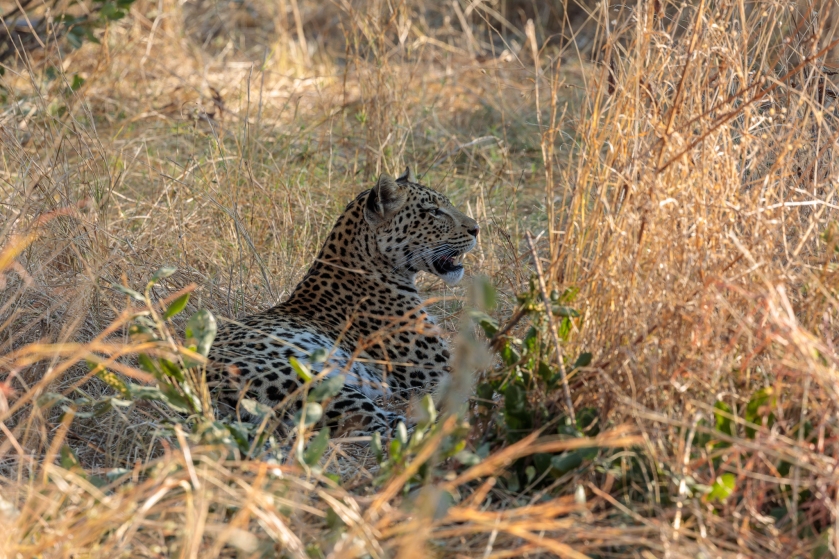
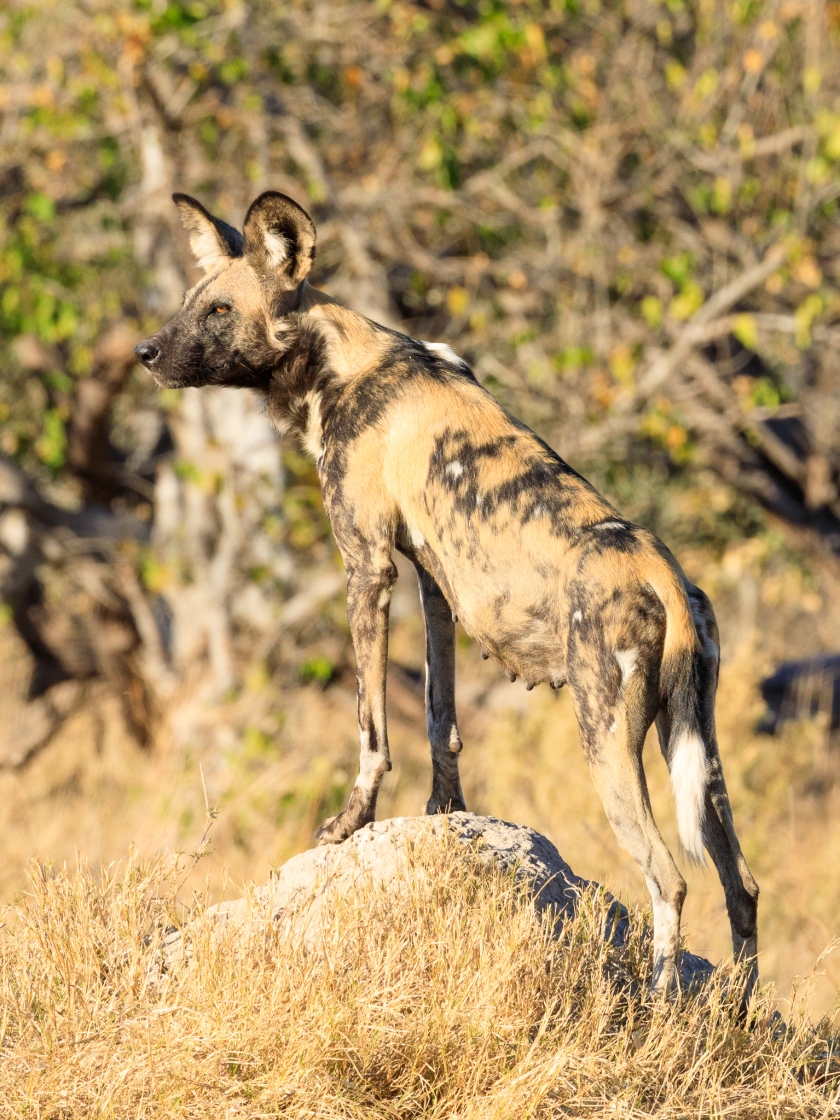

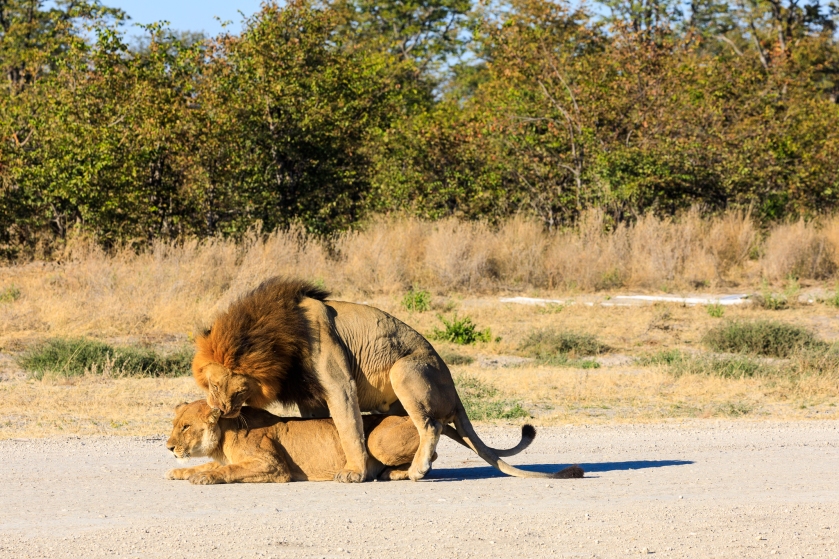
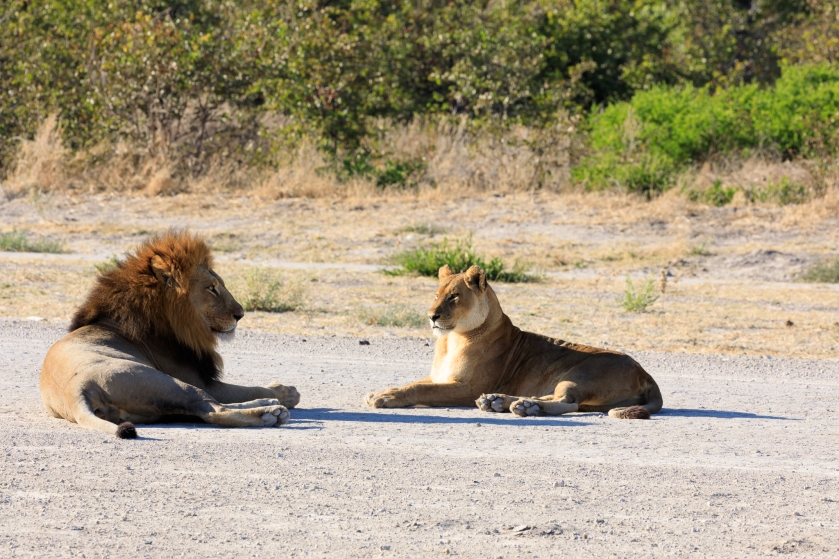
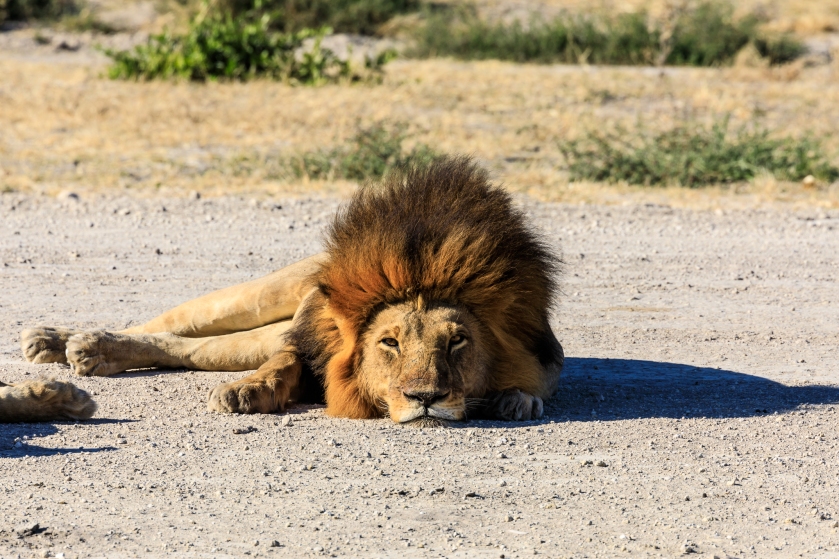 And that was the afternoon.
And that was the afternoon.



















